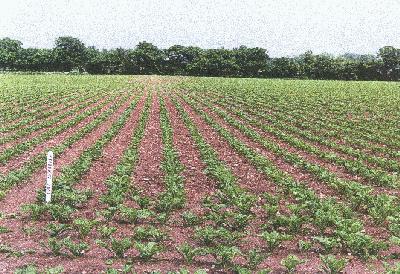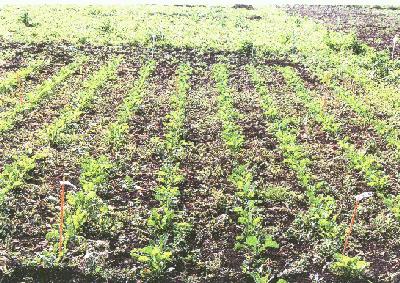 It is estimated that every square metre of agricultural land contains between 4,000 and 140,000 weed seeds. Since sugar beet is a poor competitor for light, nutrients and water compared to many weed species, a weed management programme is essential to achieve a successful crop. Today we achieve this by spraying a sequence of mixtures of herbicides.
It is estimated that every square metre of agricultural land contains between 4,000 and 140,000 weed seeds. Since sugar beet is a poor competitor for light, nutrients and water compared to many weed species, a weed management programme is essential to achieve a successful crop. Today we achieve this by spraying a sequence of mixtures of herbicides. These herbicides will only kill the weeds if they are sprayed when very small, ideally at the cotyledon stage, and if too higher dose is used the crop itself will be damaged. It is usually necessary to spray three or four times to be sure of killing each flush of weeds before the crop is big enough to compete. Even seven times is not unusual and the first application is sometimes applied before the crop emerges.
 Transgenic varieties will need only two sprays of a low dose of Roundup and the weeds can be allowed to get larger before spraying so that there will be a residue of vegetative material left in the crop, not just bare soil. There is now evidence to suggest that this residue, apart from providing a habitat for insects and birds, may attract aphids from the crop so making it unnecessary to use an insecticide later.
Transgenic varieties will need only two sprays of a low dose of Roundup and the weeds can be allowed to get larger before spraying so that there will be a residue of vegetative material left in the crop, not just bare soil. There is now evidence to suggest that this residue, apart from providing a habitat for insects and birds, may attract aphids from the crop so making it unnecessary to use an insecticide later.
